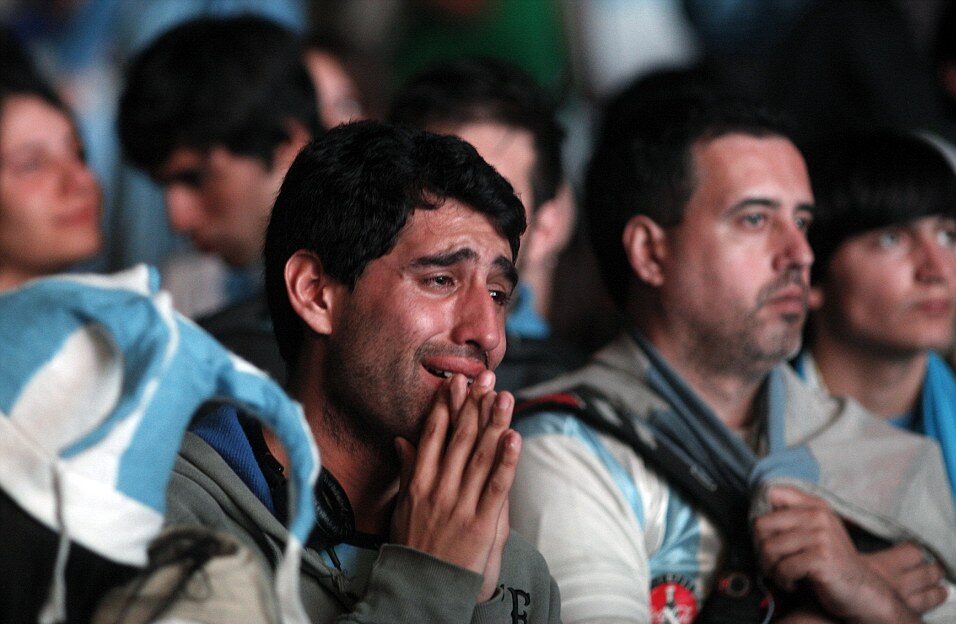Clubs will make the stadiums Covid-secure, of course, but that’s just half the battle. If the experience beyond the safety aspects is not a good one, then fans will wonder if it’s worth the bother. Add in the missed year of attracting new fans that clubs would ordinarily do. Where will this shortfall be made up?

Why We Can’t Let This All End In Tiers

Darren Young
@fanexperienceco
Darren has a weekly column on the D3D4 Football website.
He has a background in working on customer service excellence projects in the UK and Europe, and an MBA that included studying in the USA .
He is responsible for The Fan Experience Company reports that in 2019/20, went to over 200 clubs in 13 countries.
In December, when the second national lockdown ends and we revert to the tier-based system that was going so well, football fans have been given a tiny ray of hope that they might also be able to attend football games again before the year ends.
This will be limited to clubs based in low risk and infected tiers, and might also require visitors to provide proof of a negative Covid test (what could go wrong?), so the threshold will be extremely high and only a precious few fans might actually make the grade. But it’s definitely a forward step, or feels like one.
It feels too like the answer to the prayers of associations, leagues, clubs and fans alike.
But we mustn’t get carried away. While not pouring doubt all over any hint of positivity the way the scientific advisors do, it’s important to remember that having a limited number of fans back in stadiums is – while great – not going to make many, or any, of the bigger issues go away. Clubs are still losing money, and until stadiums are at or close to full capacity then the threats remain; outside of the Premier League at least.
Culture Secretary, Oliver Dowden said the ‘door was being opened a little bit’ but will the restrictions and an increase in the places in tier 3 make it less positive than it sounds?
This week also saw the government promise financial packages to several sports (excluding the Premier League and EFL) while they believe that an agreement can be reached so that football can take care of itself. But much of this money – be it from government or part of rescue packages – is in the form of loans or existing funds paid early. The money still has to be paid back.
What that really means is that, in the future, clubs will need to make enough to cover their running costs AND extra to pay back the money they will owe.
But how will they do this?
Unless the funding is changed to grants, the only realistic way that they can pay it back is from sponsorship (but will sponsors have the money or the inclination to spend what they do have in that way?) or by getting fans back and in many cases, in higher numbers than they did before.
Again, how?
Price increases will be a non-starter. It will be seen as trying to cash in on the crisis. A lot of fans won’t have as much disposable income anyway but given that the experience inside stadiums will probably be less enjoyable than it used to be, there is more of an argument for ticket price reductions, that will further eat into profits.
The expectation is that there will be an initial surge when turnstiles reopen properly, as fans rush back after going so long without, but can it last?
After the novelty and excitement begins to wear off, and other factors such as financial constraints, safety fears, parental concern, away fans possibly not being allowed to travel etc, will come into play and if a proportion of fans have also simply found other things to do on Saturday afternoons, it’s likely that in the longer-term the attendance averages will fall rather than increase and maybe by as much as 10-20%.
Most averages attendances change very little year-on-year. This suggests that many clubs are either at capacity (a lucky few are) or that they are comfortable with the numbers they get. They work hard to achieve them rather than to grow them. Churn means they will bring in a few to replace a few.
Few clubs are actively engaged in trying to fill all their empty seats, yet this is surely a fundamental objective for any club. Nor do they look at all of the potential fans that are out there but are not currently reached, either through an absence of a cohesive marketing plan, lack of diversity and inclusion policies or simply because they get their fans from the same old places they always have.
Maybe the drop in numbers that the virus might result in could also be the catalyst for a change in the way that fans are attracted. If the steady averages have made marketing managers comfortable, then maybe seeing a lot more empty seats might make them uncomfortable enough to do something different?
How many clubs, for instance, know the full demographics of their community and have plans that aim to engage personally with each group? Here are a few more like that:
- How many clubs link the work they do in the local community to their match day attendance?
- How many of the relationships with local schools actually attract significant numbers and are they properly followed up for maximum benefit?
- Is the match day experience something that would make a 12-17 year old want to come to games instead of the countless other things they might do instead?
- Do clubs know why fans that no longer come to games have stopped attending? Are there any plans in place to attract them back?
- Do clubs (and the people working there) fully appreciate the lifetime value of a fan? The answer is surely NO – if they did, they would be working far harder to get them.
These are just a few questions that aren’t being asked, or answered well, enough right now but they will need to be.
Being able to get fans back in stadiums feels like the most important thing in the world right now. The be all and end all. The fix to the problem.
And that’s down to the government. It’s not even in our control.
Making fans want to be there and making them want to come back.
That’s all on the clubs.
And that’s where the hard work really starts.
Our White Paper ‘It’s Just Like Watching Pret’ can be viewed by clicking here
© The Fan Experience Company 2020
